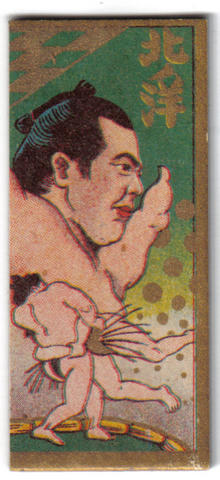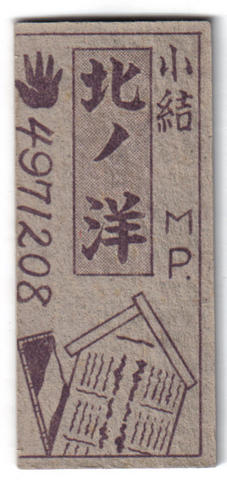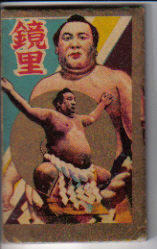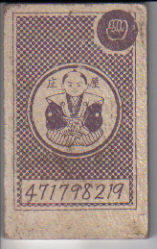|
Sumo Souvenirs |
|
Mark Buckton
Second of a two parter on sumo souvenirs - some hints on avoiding the fluff.
|
|
|
Konishiki |


|
Chris Gould
Takamiyama's 60s / 70s successes notwithstanding Konishiki was sumo's
first full-on mover and shaker from lands afar leaving Chris G to take
an in-depth look at the ripples the big guy left behind when exiting
the sumo pool.
|
|
|
Rikishi of Old |


|
Joe Kuroda
Joe Kuroda's looks back at the life and times of former yokozuna Shiranui.
|
|
|
Eric Evaluates |


|
Eric Blair
Eric IDs the true winners of the henkafest that was the Haru Basho senshuraku.
|
|
|
Rikishi Diary |


|
Mark Kent
Mark Kent - English pro-wrestler and amateur heavyweight sumotori -
takes his training a step further on his road to European and World
sumo glory.
|
|
|
Heya Peek |



|
Mark Buckton
Oitekaze Beya just to the north of Tokyo and not far from the abode of SFM's Ed-i-C falls under the microscope.
|
|
|
SFM Interview |


|
Carolyn Todd
Carolyn interviews Riho Rannikmaa during his recent trip to Osaka -
head of all things sumo in Estonia, friend and mentor of Baruto, this
is a man with something to announce.
|
|
|
Sumo à la LA |


|
Alisdair Davey
SFM's man in the shadows reports on his recent jaunt in LA, as guest of
the Californian Sumo Association and SFM reporter at large.
|
|
|
Photo Bonanzas |


|
Hot on the heels of the recent Ise bonanza - Haru up close and very very personal - some of our best pics to date.
|
|
|
Haru Basho Summary |


|
Lon Howard
Lon wraps the Haru Basho and chucks in a few bits on the henka issues the top dogs are suffering from at present.
|
|
|
Sumo Menko |


|
Ryan Laughton
Sumo cards of old brought to life once again by expert collector Ryan
Laughton. None of your BBM offerings here - Pt II of III.
|
|
|
Natsu Ones To Watch |



|
Carolyn Todd
Carolyn ponders the ones to watch come May and Natsu when sumo comes home to Tokyo.
|
|
|
Kimarite Focus |
|
Mikko Mattila
Mikko's latest look at sumo's kimarite offers unequalled analysis and in depth explanations.
|
|
|
Amateur Angles |


|
Howard Gilbert
On your marks, get set, go - Howard Gilbert walks us through the months ahead on the amateur calendar.
|
|
|
Kokugi Konnections |



|
Todd Lambert
Click on Todd's latest selection of the best sumo sites the WWW has to offer.
|
|
|
Fan Debate |
|
Facilitator - Carolyn Todd
Should it or shouldn't it? Honbasho go on the overseas road that is.
See what SFM's Chris Gould and James Hawkins have to say.
|
|
|
SFM Cartoons |

|
Benny Loh & Stephen Thompson
In this issue's cartoon bonanza, sit back and sample ST's latest artistic offerings.
|
|
|
Sumo Odds & Ends |
|
SFM's interactive elements - as always includes Henka Sightings, Elevator Rikishi and Eternal Banzuke!
|
|
|
Let's Hear From You |

|
What was it that made you a sumo fan - A. S. - the face in the crowd
reveals almost all - to see everything you'll have to close your eyes.
|
|
|
Readers' Letters |


|
See what our readers had to say since we last hit your screens.
|
|
|
Sumo Quiz |
|
The Quizmaster
Answer the Qs and win yourself a genuine banzuke.
|
|













